Ryan Hall's Blog, page 305
January 4, 2016
What’s Trending in 2016?
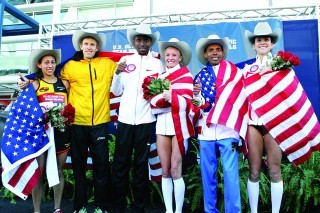
Photo: Photorun.net
Based on rising running trends seen in the tail end of 2015, here’s what we predict will be popular or will change within the sport for 2016:
1. It’s an Olympic year
Every four years, the American consciousness pays a little bit more attention to competitive running, especially when U.S. runners are in the limelight. Even if you’re not a total running geek, this will be a great year to be inspired by running—for both your own racing goals as well as the world-class runners who will be racing in this summer’s Olympics in Rio de Janeiro. Watching and reading about top-tier Americans like Kara Goucher, Galen Rupp, Meb Keflezighi, Desi Linden and other world-class international runners can motivate you to go the extra mile in your own running pursuits.
2. Anybody can run a half marathon
If you haven’t run a half marathon yet—or if you want to run your next one faster—this is your year! The half marathon has become the most popular long-distance race, with more than 2 million finishers recorded for 2014, because it’s a big challenge that requires training and dedication, and yet it’s not physically, mentally and emotionally overwhelming as the marathon can be.
3. The marathon still matters
Just about anybody can run a marathon, but only those who are willing to endure a 16-week training plan and do all of the extra work (drills, core strength, speed work, nutrition) should actually run a marathon. That being said, because it’s an Olympic year, there will be plenty of buzz about the U.S. Olympic Trials Marathon on Feb. 13 and the marathon during the Rio Olympics, which will inspire many to test their mettle over 26.2 miles this year.
4. Ultrarunning is the new Ironman
Years ago, the marathon was considered a top-of-the-pyramid goal for many recreational runners. But then many went in search of something more and found Ironman triathlons to be the next big thing. Now ultrarunning has become the “what’s next?” endeavor for many endurance fiends. And while finishing a 50K, 50-mile, 100K or 100-mile race is a huge accomplishment, the trend is already leaning toward tackling the most challenging races that can be found.
5. Next-level wearable tech
The next generation of running tech is upon us. Instead of just counting steps and miles, modern products like Stryd, RunScribe, Ambiorun and Lumo Run will be able to monitor information like power output, running efficiency, force impact and stride deficiencies. Tech-enhanced shoes from Under Armour and Altra—shoes that automatically track your distance, pace and cadence—are expected to hit the market by late winter.
6. Wild socks and apparel designs
For years, basic, solid colors and simple design elements were the rule for performance socks and clothing. A few years ago bright colors became a mainstay, but now wild patterns, prints and designs have become commonplace. But the call to fashion hasn’t come at the expense of functionality. You can expect the latest apparel to cover both ends of the spectrum, from aesthetically designed race-day gear to multifunctional athletic wear with an urban vibe that can double as everyday casual wear.
RELATED: Much Ado About Running Socks
7. The continued growth of obstacle racing
While it’s becoming more and more competitive at the front of the pack, it’s still growing by leaps and bounds among weekend warriors. Short, fun races that require little or no training are booming at one end of the spectrum while epic championship races with professional athletes and big cash prizes are gaining momentum at the other. And it could
seriously become an Olympic sport by 2024.
8. Rising shoe prices
There are still several good running shoes available for $100 or less, but don’t expect prices to trend downward this year. Although many great performance-oriented trainers can be found in the $105 to $125 price range, Newton, Hoka One One and a few other brands have forever changed the spectrum with premium pricing—now there are dozens of models in the $130 to $175 price range. The higher cost of material, manufacturing and shipping are mostly to blame, but so too are the advanced features and designs. The ASICS MetaRun shoe—the most expensive running shoe ever—carries a price tag of $250.
9. Running retail changes
The best place to shop for running shoes and gear is at your local running specialty shop—and ideally one that is locally owned—because that’s typically where you’ll get the best service, local knowledge, and community interaction and support. But the retail industry is changing and those small stores that have been at the core of the sport for decades are struggling. Some of the best shops in the country are now owned by national chains more loyal to the bottom line and corporate shareholders than to the local running scene. Plus, there are dozens of online stores selling closeout models at big discounts. Support your local shops this year as a treasure of your local running community.
10. Running is fun
This should seem like a no-brainer, but this should also always be the single greatest trend in running. For some it means hammering hard track workouts in pursuit of faster race times or going on grueling all-day adventure runs to train for an ultra race or to achieve personal FKTs out on the trails. For others it means wearing a tutu and doing your best to merely reach the finish line of a half marathon, or showing up for a 5K group run after a long workday to blow off some steam and enjoy a happy hour beer with friends. To each their own! No matter how you do it, make sure you’re having fun when you’re out there putting one leg in front of the other.
The post What’s Trending in 2016? appeared first on Competitor.com.
8 Ways to Make 2016 Your Best Year of Training

Achieve this year’s race goals with these eight simple tips to get you started:
1. Start by debriefing the previous 12 months
Look back at your training log and take note of your best races and most consistent weeks of training. Also note the poor performances—those workouts that didn’t go so well—and any missed training due to injury or illness. Make lists of the things you did well and where you need improvement.
2. Find a coach or mentor
Not every runner needs a coach, but no runner knows it all either. Seek a mentor or someone you trust and respect to bounce ideas off of and get objective feedback on your training and racing goals.
3. Set process goals
At the outset of a new year, most runners will first set racing goals. Alongside those outcome goals—qualifying for Boston, running your first ultra, setting a personal best—be sure to set process or actionable goals that you commit to regularly, such as strength training twice a week, taking a complete rest day each week, etc. Achieving these process goals will put you in a better position to achieve your outcome goals.
4. Plan to rest
The only thing runners hate more than being forced to miss a workout is actually planning to take time completely off from training. Don’t wait for injury or illness to knock you to the sidelines for a week. After a peak race or long training block, plan to take a seven- to 14-day break to rest and recharge before going after your next big goal.
5. Work on your weaknesses
It’s easy to fall into the trap of training for the same types of races because those are the ones you’re good at. Work on your weaknesses by spending two to four months training for distances that you don’t typically run. For example, if you’re a half marathoner or marathoner, spend a couple months working on your speed by training for shorter races such as 5K, 10K or cross country. If you’re a short-distance specialist, training for a longer race during the off-season can help develop newfound strength.
6. Go in over your head at times
There’s a fine line between optimal training and overtraining, but chasing folks who are faster than you from time to time can help take your own training and racing to the next level.
7. Race more
The truth is you can only be in peak form a few times a year. However, using less important races as competitive training sessions is a good way to hone your racing skills while still getting in a good workout. The key is identifying the races you want to peak for and being OK with “training through” the other ones.
8. Look into the future
Don’t just think about what you want to achieve in the next 12 months. Adopt a long-term approach to training and set goals two to four years down the line. Look at 2016 as step one in your overall evolution as an athlete.
RELATED: 3 Resources for Getting (and Staying) Motivated in 2016
The post 8 Ways to Make 2016 Your Best Year of Training appeared first on Competitor.com.
Cool Gear for the New Year
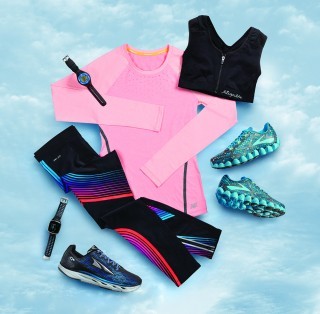
Photo: Nick Nacca
For runners, the new year means a renewed commitment to health, new running goals and, of course, new gear. Here’s a sneak peek at innovative new products hitting stores in 2016.
Photos: Jerry Chen
Photo Gallery
1 of {count}
Back to Start
View Larger Image

New Balance Trinamic Long Sleeve, $85
Smooth, stretchy fabric means you get a comfortable and non-restrictive shirt that can double as a stand-alone piece or as a base layer on chillier days. Laser-cut ventilation keeps moisture moving, and looks cool too.
View Larger Image

Soleus GPS Pulse BLE + HRM, $229
Yes, it tells time. As well as wrist-based heart rate, pace, distance and calories burned and offers programmable heart rate zones. What’s new is the convenient wireless data upload via Bluetooth.
View Larger Image

AlignMe InterActive Bra, $95
Good posture is essential to running form, and, with high-tension bands and comfortably stout fabric panels, this bra delivers your mom’s “stand-up straight” message in a front-zip encapsulation and compression combo.
View Larger Image

Brooks Neuro, $130
Now cushioning, energy return and ground feel come together in the same shoe. With a completely decoupled midsole/outsole undercarriage, the Neuro can respond to both strike force and external forces—think uneven ground—for smooth running.
View Larger Image

Nike Power Speed Tight,$150
The moderate all-over compression from these tights gets an extra squeeze from eye-catching, screen-printed support in areas that need it the most. The back pocket’s moisture barrier keeps essentials from getting soaked with sweat.
View Larger Image

Altra IQ, $199 ($249 for the iFit watch)
Paper-thin sensors embedded in each shoe allow the IQ to serve up real-time gait analysis delivered to the iFit watch (which also tells time, measures heart rate and has a GPS) or straight to your phone via the free app.
View Larger Image

Optic Nerve Reactor, $89
Shades with photochromic lenses, an adjustable soft-grip nosepiece and no-slip temple pads add up to lightweight running comfort at a sweet price.
View Larger Image

Nuun Active, $7 (12 tablets)
Good just got better, with a new formulation (for Active and Energy), making it easy to fuel smart. Non-GMO dextrose for better absorption, new ingredients (monk fruit extract, stevia and avocado oil) and being certified vegan as well as gluten-, soy- and dairy-free will keep active bodies happy.
View Larger Image

Inkblaat Insoles, $17
Not only do these cut-to-fit and washable insoles blast shoe stink (with an anti-microbial shield instead of perfumes), they also come in a variety of bold and whimsical patterns.
Related Galleries

Bright Running Gear for Visible Nights

9 Dry Jackets for Wet Runs
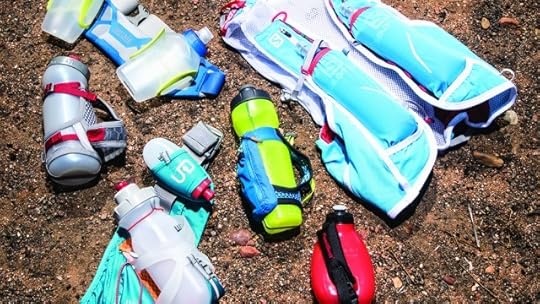
Closer Look: On-the-Go Hydration Gear
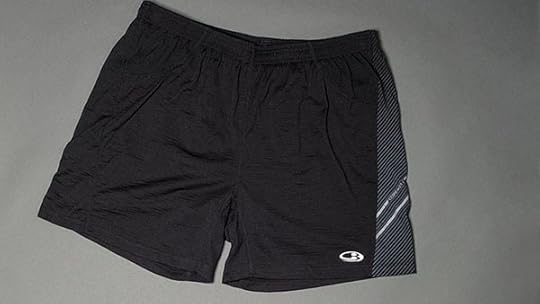
Running Clothes Featuring Merino Wool

More Galleries
The post Cool Gear for the New Year appeared first on Competitor.com.
One of a Kind: Interview with Race Director Extraordinaire Dave McGillivray
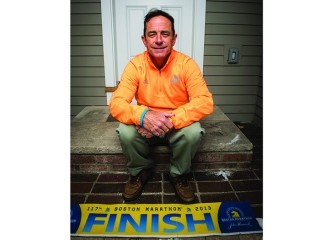
Dave McGillivray has organized more than 1,000 running races and triathlons in the past 35 years. He's also run 141 marathons, including the 2015 New York City Marathon. Photo: Scott Draper
A shorter version of this interview appears in the January 2016 issue of Competitor.
Back in 1973, while still in college, Dave McGillivray organized a 2.5-mile running race between two parks in Medford, Mass., and something inside of him clicked. It was a tiny event, but it was the dawn of the running boom, and he sensed recreational running was going to grow for years to come. While pursuing his own running and triathlon goals, he opened a running store, twice ran across the U.S. for charitable causes and became a full-time race organizer in 1982. In the past 35-plus years he’s put on more than 1,000 events—and in doing so, has helped raise millions of dollars for charitable causes. The resident of North Andover, Mass., is now 61 and still going strong, competing in numerous events in 2015 while also directing about 30 events per year. He’s competed in the Ironman World Championship nine times (most recently in 2014) and run 141 marathons, including every Boston Marathon for the past 43 years. (He’s run the past 28 late at night following the completion of his duties as race director.) One of his last races of 2015 was the New York City Marathon, where he ran a respectable 4:04:50.
How has running changed since the late 1970s?
The bell curve of runners has definitely shifted to the right. When I ran 2:29 at Boston, I finished about 180th place. This year 2:29 at Boston would have finished about 50th place. There are plenty of people who can run 2:29 nowadays, but back then they were a dime a dozen. I was a third-tier guy back then, but we all trained and raced hard. I was a fruitcake back then. We ran, on average, 120 to 130 miles per week. I was doing double workouts on most days. I was a ship bum compared to the faster guys. You had Billy and Randy Thomas and Bobby Hodge and Dick Mahoney, all those guys were running repeat miles at 4:50-4:55, then you’d have the second group at 5-flat. Then you’d have the rest of us slugs at 5:05 or so. We never said we were “running just to finish.” That was a given, obviously. We were running to race, to beat each other into the ground.
RELATED: Bill Rodgers—40 Years After His First Boston Marathon Win
How have increased popularity and slower median finishing times changed the way races are organized?
There are still fast runners and moderately fast runners and average runners and slower runners. From my perspective, that’s all OK. We all can coexist; it just makes the dynamics and the management of it more complex. I’ve always said when the starting gun fires, there are three races going on: the front end, the back end and the big one in the middle. You could have three people run the race at the front, in the middle and at the back and when you asked them how the race went, you’d get three entirely different answers . They’d have a totally different experience even though they ran the same race, but they’re all equally important.
Do you think all marathons should have prerequisite qualifying times?
I’m a fan of having people, in order to be able to run a marathon, prove that you’ve at least covered a half marathon under a certain time. Other people don’t necessarily agree with me, but I think it’s prudent. We want people to strive to set the goal of running a marathon, but my motto is that you have to earn the right to do it. It isn’t just about signing an application. What you find now is an interesting dynamic in which you have some people who, because they have signed an application and paid the entry fee, feel they can take all day to cover the distance. On the race management side, we’re only given permission to keep the roads closed for so long, volunteers are only required to be out there so long, medical stations are only prepared for so many people and for so long, and the list goes on and on. But when you’ve got people out there for a long time—way beyond what your road re-opening program has specified—that’s when you have some challenges.
How did the explosion of running for charity happen?
It was a natural fit. Running is an amazing sport, and when you combine it with philanthropy, it doesn’t get any better than that. You set a personal goal of running a race and you accomplish that, but you’ve also done some goodwill in the process. You can really put your head on the pillow at night and think, “Geez, that was a good day. Now let’s wake up tomorrow and let’s do it again.”
Why does recreational running continue to grow?
The massive growth in running is just about people wanting to do something in which they can feel good about themselves. That’s what running has become. That’s what the finisher’s medal symbolizes. That’s why people want to go to a race where there’s a nice medal because they go home feeling good about themselves. When people ask what I do for a living, I tell people I help raise the level of self-esteem and self-confidence of tens of thousands of people across America every year. That’s what it is and that’s why I do this.
Why has running become such a passion for such a wide range of people?
There are so many different dynamics to it. There’s health and fitness benefits, it’s the lifestyle, it’s the social camaraderie, the weekend-away-with-the-girls type of stuff. And it’s all about self-esteem and self confidence. There is still the element of competitiveness at the front end and the people who are running hard in their age groups. Then you’ve got races like the Boston Marathon, which serves as a measure that, if you work hard enough, you might be able to get in the ultimate bucket list event, kind of like the World Series or the Super Bowl … the Holy Grail or running. Running is convenient—all you have to do is head out the door. You don’t have to drive to a facility or gym, you don’t have to pump up your tires. There’s everything right about it. That’s why you’re seeing what you’re seeing: races selling out at record pace, races popping up all over the planet. It really is a phenomenon what’s going on.
What do you think think about all of the novelty runs and obstacle races that have popped up?
Those races serve a whole different clientele, which ultimately I think are going to roll back into our community as runners. I’m not against those events because they create the incentive to get people off the couch to do something. Once they start doing something, maybe they’ll say, “OK, I’ve done enough of those and have crawled through the mud enough and jumped over barbed wire, but I still want the health and fitness benefits as a lifestyle.” And that’s great.
How would you describe the essence of being a race director?
Race directors, in my opinion, are the heart and soul of the industry. They’re people who make the commitment to produce these events. They’re stepping up to the plate and taking all the risk. I always say that the genius is seeing it in the seed. Someone has to have the vision first, then they have to have the guts to commit to it. And then they have to go shop it around, whether that means sponsorship or getting resources or permissions. You have to make all that happen before registrant No. 1 signs up. And then you’ve got to recruit all of these people, and hopefully you can get enough of them. Then you have to get another set of people who are willing to volunteer and make sure people go the right way on the course and can get their water at the aid stations. That’s all on the shoulders of the race director or the race management group. So that’s a lot of pressure and a lot of work.
Do you think most runners understand or appreciate what it takes to be a race director?
I think people appreciate it, but I don’t think they have a real good understanding about the magnitude of what goes into it, especially for a first-time event. No one knows from nothing. You’re guessing. “How many are going to run?” I don’t know. “How many are you planning for?” I’m planning for 1,000. “What if 5,000 show up?” Good question. “What if 100 people show up?” Good question. Somebody’s taking a huge risk. But that’s why you need to be passionate about it. There have to be other motives, and for me, it’s just knowing at the end of the day I’ve helped change lives. That makes me feel good. I know I’ve made an impact.
What are the ways race organizing has changed?
The industry of mass participation races now has three main disciplines: technology, security and medical resources.
Technology: Nowadays people aren’t comparing races for the courses or the water stations or course directional signs, it’s about who has the most toys, whether it’s some kind of video streaming mechanism or whether it’s instantaneous results that are texted to you right away to tracking. Technology has taken over, and those of us who are old-school race directors are clueless to what is available out there. So you have to bring onto your team those who are tech savvy and experienced in that world because it’s so important to what we do now, even though it didn’t exist 15 years ago.
Security: Obviously, given what happened in Boston in 2013 and now what’s going on around the world, your race is not really your race anymore. It’s in the hands of public safety to determine what is needed and necessary to create a safe environment, whether you can pay for it or not or whether you think you need that much security. You don’t have much of a choice. You want to be able to create an event that’s as safe as possible, but it’s certainly making things extremely complicated now. It’s very complex. It’s not just a road race any more, and that’s taken a little bit of the fun out of it, but you have to put it in perspective. You have a responsibility to do all that can be done to keep it safe.
Medical resources: It’s so great that the walls of intimidation have crumbled and so many people are running races and believing in themselves and can do this. God bless them, we’re all for that kind of inclusion! But at the same time, we all recognize that some people probably didn’t do enough to work to get there, and so they get out there and get into a little trouble and they can become our problem as much as they become their own problem. So we have to be prepared to be able to deal with the volume of a variety of casualties that can occur. Ramping up medical coverage and doing education seminars so people understand what they’re getting themselves into, what they need to do to properly train and earn the right to do these things and the degree of difficulty they’ll be facing are all very important parts of what we do.
How have you remained so fit and so healthy through the years?
We were really hammering ourselves as runners in the late 1970s, early 1980s, but when you look at it now, 90 percent of those guys are gone. They’re not running anymore. They’ve got artificial hips, knees … whatever. We were all asking ourselves back then, “What is this kind of training going to do to us later in life?” The Johnny Kelleys of the world never did that kind of stuff. So it was a different world. “What’s the long-term effect of this?” I think you’re seeing it, in that a lot of those people aren’t running anymore. I keep saying to myself, knock on wood, that I should be thankful that I can still put one foot in front of the other. I think what saved me is that I morphed from being just a runner to being a triathlete. I spread my thirst and hunger for working out over different disciplines, whereas those guys were banging away on the track and doing the long runs, and I think today you’re seeing the results of that. Billy (Rodgers) is still running a little and Joanie (Samuelson) is a phenomenon, but not many of those other runners are still running.
RELATED: The Faces of Boston 2015
You’re still a competitive age-group runner and triathlete. What do you have planned for 2016?
I ran four half marathons and two marathons in six weeks [as of Dec. 1]. I think I’m done until Disney’s Dopey Challenge in mid-January. I’ll regroup a bit and see what kind of fitness I have. I don’t want to do it unless I’m competitive and ready for it. It’s nice not always have something hovering over you. Sometimes it’s kind of nice just to go out and train just for the sake of training as opposed to having to training for something specific. I’m going to start looking at the calendar and start deciding where I want to race in 2016. I might have one more Ironman in me, but I might wait until I’m closer to 65 for that. I keep asking Joanie Samuelson when she’s going to do one with me.
Based on your passion for endurance sports, do you have the best job in the world?
People always ask what I do for work, but I say “I don’t work.” When you think of work, you think of “9 to 5 to stay alive” and what you do for the paycheck but probably not something you would do if you were independently wealthy and didn’t have to do it. For me, if I had no financial concerns, I honestly would still want to be doing what I’m doing. Maybe not as much, but I’d still would want to be doing some of it because it’s in my DNA.
The post One of a Kind: Interview with Race Director Extraordinaire Dave McGillivray appeared first on Competitor.com.
January 3, 2016
Shoe Talk: Brooks PureFlow 5
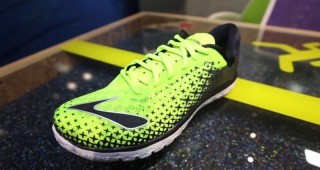
The Brooks PureFlow has been reimagined for its fifth edition. Here’s a closer look.
RELATED: Shoe Talk: The North Face Ultra MT
The post Shoe Talk: Brooks PureFlow 5 appeared first on Competitor.com.
5 Ways to Mentally Prepare For Your Next Race
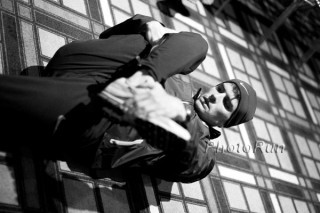
Photo: PhotoRun.net
Running a race can be a scary thing. Whether you’re toeing the line for your first 10K, or an elite level marathoner trying to qualify for the Olympic Trials, knowing that you’re about to push your body’s limits is reasonable cause for anxiety at any level. So how do you block it all out? Longer long runs and faster track workouts may increase your lung capacity and your leg strength, but how can your brain make the most out of all the work you’ve put in?
Here are five tips from top coaches and sport psychologists on how to mentally prepare when the gun goes off.
1. Boost your confidence through visualization.
“The human brain is strange in that instead of always looking to build up confidence, we seem to have a tendency to focus on the negative. Runners often can have 100 good workouts and one bad [workout] yet they will focus on that one bad one and let it erode their confidence for race day,” says coach Greg McMillan, founder of McMillan Running. “Successful athletes develop strategies to boost self-confidence, defeat negative thoughts and keep the positive ‘I can do it’ attitude more often. Formulate a picture of success on race day. They then replay this scenario over and over across the training plan and even come up with how they will deal with other scenarios that may come up so that race day, they are prepared for anything and can have a successful race.”
2. Find the optimal zone.
“When it comes to mental preparation before a race, I’m a firm believer that everyone benefits from identifying their optimal zone of arousal. Some people may need to be extremely relaxed before a race whereas others might need to be really pumped up,” explains Dr. Jen Gapin Farrell, a Certified Consultant through the Association for Applied Sport Psychology. “You can find your optimal zone by reflecting back on previous performances and gaining awareness of what you were physically and mentally doing before races in which you ran well and those in which you didn’t run so well.”
In order to find that optimal zone, Farrell notes certain techniques for deep breathing and progressive muscle relaxation.
Deep Breathing: “Inhale slowly through your nose, drawing air deep into your lungs. Hold your breath for about five seconds, then release it slowly. With each exhalation, imagine that you are getting rid of any stress or fatigue that might prevent you from performing your best. Focus only on each breath. Repeat the exercise five to 10 times. Repeat “energy in” while inhaling, and “fatigue out” while exhaling.”
Progressive Muscle Relaxation: “Isolate and contract muscle groups, creating tension for 8 to 10 seconds, then relax the muscles and let the tension go. Concentrate on the feel of your muscles, specifically the contrast between tension and relaxation. In time, you will recognize tension in any specific muscle and be able to reduce it. Use words and phrases as you progress through the muscle groups like ‘relax,’ ‘let go,’ ‘release,’ ‘stay calm,’ and ‘feeling fresh.’ Commonly-used muscle groups are the legs, shoulders and neck, and face.”
3. Accept negative thoughts and then say goodbye to them.
“The top athletes have an acceptance-commitment mindset, which accepts thoughts are just that. They are not reality,” says John Coumbe-Lilley, a Certified Consultant of the Association for Applied Sport Psychology and Director of Undergraduate Studies & Clinical Assistant Professor of Kinesiology and Nutrition at The University of Illinois at Chicago. “A runner can have a negative mindset approaching a race, but their strategy is that they are aware and know their thoughts are harmless. As they approach competition they accept them and say goodbye to them, shifting their focus to the approach they need for the race.”
RELATED: Keys To Running With Mental Toughness
4. Begin your routine early.
“For many athletes, a successful routine doesn’t begin on race morning, but can encompass elements of travel, pre-race routine or the hours leading up to competition,” says Drew Wartenburg, head coach of the Sacramento-based NorCal Distance Project. “Like most race-day behaviors, relaxation techniques should be practiced in advance. The sports psychologist that our team uses helps introduce a variety of techniques from breathing exercises to visualization and mental cues for our athletes to experiment with as they refine their personal routines.”
5. Enjoy the moment.
“On race day, rather than stressing out about the end result or trying to impress others, focus on the process of racing your best and use the love of the event(s) and the joy of competition as your primary motivation,” says Dr. Jim Afremow, a leading mental performance consultant and author of The Champion’s Mind: How Great Athletes Think, Train, and Thrive. “Feel like you’re smiling broadly on the inside because of how hard you’ve trained, how much you enjoy racing, and having this golden opportunity to discover how good you can be.”
RELATED: How To Train Yourself Mentally For Your Next Race
The post 5 Ways to Mentally Prepare For Your Next Race appeared first on Competitor.com.
December 30, 2015
Trail of the Week: The Skyline Traverse, Boulder, Colorado

A panoramic view of Boulder and 8,150-foot Green Mountain from the summit of 8,459-foot Bear Peak. Photo: Brian Metzler
Our Trail of the Week feature is made possible through a partnership with Trail Run Project.
This route lets you see almost everything that Boulder, Colo., has to offer for mountain running by traversing five of the tallest mountains in Boulder: South Boulder Peak (8,549 feet), Bear Peak (8,459 feet), Green Mountain (8,150 feet), Flagstaff Mountain (6,983 feet), and Mt. Sanitas (6,843 feet). Any one of those mountains can make for a great run, but combining all five in one loop can be downright epic.
There is a reason this is a frequent test piece for both pro and amateur ultrarunners. No matter how you combine the mountains—a variety of trailheads and interconnecting trails make numerous options possible—the Skyline Traverse is a long, arduous ultra-style run that has a variety of technical terrain and steep trails with a lot of gain and descent in relatively short distances. But it’s a great challenge with great views throughout—a perfect way to explore all that Boulder has to offer.
The most significant creek crossing in the first half of the route is at Bear Canyon, after descending from Bear Peak just before you head up Green Mountain. This is one of only a few places to fill up water mid-journey, if you need to. There is also a water fountain at the Chautauqua ranger station, and the ranger station atop Flagstaff Mountain usually has bottled water for hikers (because the fountain has been out of service in recent years.) The next (and last) place to get reliable water is the drinking fountain at Eben G. Fine Park.
From November to April, there is usually ice on the higher parts of the route, especially on north-facing trails. Some sort of traction is recommended for these sections.
The Data
Miles: 16.1 (But it can be as long as 20-22 miles, depending on the trailhead and route you select)
Runnable: 71 percent
Average Grade: 13 percent
Max Grade: 63 percent
Total Ascent: 5,273 feet
Total Descent: -5,348 feet
Highest Elevation: 8,549 feet
For a closer look, check out the interactive map, data, photos and virtual run simulator courtesy of Trail Run Project:
The post Trail of the Week: The Skyline Traverse, Boulder, Colorado appeared first on Competitor.com.
Out There: 11 Truths New Runners Must Accept
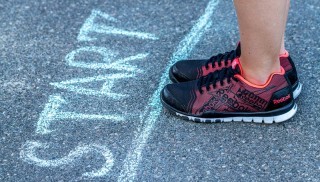
Photo: Shutterstock.com
Columnist Susan Lacke gives an honest welcome to the new runners of 2016.
Dear New Runners,
Congratulations on choosing a running resolution for 2016! You made a very, very good choice. That’s surprising, given that we can’t say the same about most other decisions you’ve made under the influence of champagne.
You’re not alone—thousands of runners, including yours truly, started off just like you. The New Year marks the beginning of many, many running journeys—some lasting decades, others lasting mere minutes on January 1 before hanging up the shoes in a slew of hungover profanities.
You’ve probably done at least a little bit of research on running, so I won’t bore you with the many clichés you’ll hear again and again — “Running will change your life,” “It doesn’t matter how slow you go, you’re still lapping everyone on the couch,” “Are you going to do something about those bleeding nipples?” Instead, there are a bunch more important things that never really seem to get mentioned. Things like…
For a while, you’re probably not going to like it very much.
Running kind of sucks. Make no mistake—races are fun and the runner’s high is a very real phenomenon, but it takes a while to get to the enjoyable stuff. Your first few months of running will be a lot like puberty—awkward, confusing, and full of strange discoveries about your body. Just know this: It’s totally normal, don’t be scared, and you may want to check out a few Judy Blume books to read on the treadmill.
It’s okay to walk. Scratch that—plan on walking.
This troubled me a lot as a new runner. I made a New Year’s resolution to finish a 5K race, and thought training for it involved running nonstop. So my first day, I set out to run 30 minutes, went until I got out of breath/tired/frustrated, then stopped to berate myself for not being able to make it for more than a few minutes (running is hard, man.) No one told me I could take walk breaks, so I’m telling you now—take the freakin’ walk break.
“Do it for the selfie” ain’t gonna cut it.
Make a list of reasons to run that have nothing to do with how many people double-tap the photo of your medal on Instagram. What will get you out the door for your run the day you discover no one really cares you’re running? (Because—and this is a hard truth for most of us to accept—no one really cares you’re running.)
While you’re at it…
Please raise your right hand, don your best Joan Crawford voice and repeat after me: “No selfie sticks! EVER!” The trails have enough hazards as it is. Plus, you look like an idiot.
Spandex wants to make you cry.
The first time you don a pair of running tights can be an undignified experience (“My thighs are shaped like that?”). Unless you hum the theme from “Batman” and pretend you’re running after the bad guys. Then it’s actually pretty badass.
You stink.
Resist the urge to put off laundry day by re-wearing yesterday’s running shorts. There are some things in the world you just can’t un-smell, and two days worth of crotch sweat is one of them.
Self-control is sometimes close to impossible.
You’ll soon develop a newfound appreciation for food—it’s the fuel that gets you through your miles, after all. Going forward, don’t be surprised if your body begins to crave fresh, healthy ingredients. You should heed that call and make yourself a salad or something. But be more prepared for the onset of Runger, or post-run hunger, in which you start voraciously shoving food—any food—into your face hole. Yes, your body is a temple, but sometimes the temple demands those tasty-looking Oreos on the altar.
You will learn more about your digestive system than you ever wanted to know.
The day you figure out how to consistently poop before a run may very well be the greatest day of your life. Please, wash your hands before doling out the celebratory high-fives.
Haters gon’ hate.
This is the time of year when a small group of last year’s gym-goers loudly complain about newbies like you clogging up the treadmills and trails. I don’t know why they do this, but I assume it’s because their rear ends are sore from riding such high horses. Smile, shake it off, and keep showing up.
Don’t be That Guy next year.
All the aforementioned people complaining about you right now have forgotten they were new runners once. I beg of you, don’t follow their example. The world has enough jerks—we don’t need to add to their ranks. As you become more confident and accomplished as a runner (and you will become more confident and accomplished), don’t forget how those first runs felt.
Like it or not, you’re one of us.
Runners are weird. They wear weird clothes, eat weird foods, and obsess over weird things. They wake up at weird times to perform weird exercises and record weird data about what their weird bodies accomplished. Right now, as a new member of our group, you may recognize that weirdness, but here’s the really weird thing: pretty soon, all of this will become completely normal to you.
Welcome to the family, weirdo. We’re glad you’re here.
***
About The Author:
Susan Lacke does 5Ks, Ironman Triathlons and everything in between to justify her love for cupcakes (yes, she eats that many). Susan lives and trains in Salt Lake City, Utah with three animals: A labrador, a cattle dog, and a freakishly tall triathlete husband. She claims to be of sound mind, though this has yet to be substantiated by a medical expert. Follow her on Twitter: @SusanLacke.
The post Out There: 11 Truths New Runners Must Accept appeared first on Competitor.com.
Best Of Competitor 2015 Winners Announced!
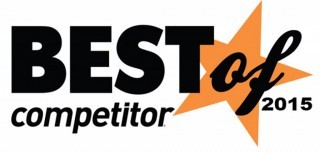
Competitor magazine is one of the world’s leading running and fitness publications. The free printed edition of the magazine is distributed nationally every month across the U.S. Check out this link to see where to find a copy in your region. The free digital version is available free through Competitor.com or on ISSUU.com, as well as on iTunes. More stories, photos and videos can be found at Competitor.com.
Every year, we ask our online readers and social media followers from around the country to nominate their favorite races, specialty shops, clubs, charity programs, coaches, products and more.
We are pleased to announce the Best of Competitor winners for 2015! A big congrats to the winners in each of our eight distribution regions.
Best of Competitor 2015 — Northeast Region
Best of Competitor 2015 — Mid-Atlantic Region
Best of Competitor 2015 — Southeast Region
Best of Competitor 2015 — Midwest Region
Best of Competitor 2015 — South Region
Best of Competitor 2015 — Mountain West Region
Best of Competitor 2015 — Northwest Region
Best of Competitor 2015 — Pacific West Region
RELATED: Competitor’s 2015 Runners of the Year
The post Best Of Competitor 2015 Winners Announced! appeared first on Competitor.com.
Best of Competitor 2015 — Northeast Region

Congratulations to all of the Best of Competitor winners for each of our eight distribution regions!
Competitor magazine is one of the world’s leading running and fitness publications. The free printed edition of the magazine is distributed nationally every month across the U.S. Check out this link to see where to find a copy in your region. The free digital version is available free through Competitor.com or on ISSUU.com, as well as on iTunes. More stories, photos and videos can be found at Competitor.com.
Every year, we ask our online readers and social media followers from around the country to nominate their favorite races, specialty shops, clubs, charity programs, coaches, products and more. Competitor is pleased to announce the 2015 winners for the Northeast region.
Best of Competitor Northeast 2015
Best 5K/10K: Rocky Run, Philadelphia
Best Half Marathon: Boston’s Run to Remember, Boston
Best Marathon: Boston Marathon
Best Trail Race: Black Diamond Running Series, Scranton, Pa.
Best Destination Race: Shamrock Marathon Virginia Beach, Va.
Best Women’s Running Event: Tufts Health Plan 10K for Women, Boston, Mass.
Best Race for Kids: New York Road Runners Times Square Run, New York
Best Running Club: Nike Running Club, several locations
Best Running Shoe: Mizuno Inspire
Best Specialty Running Shop: Marathon Sports, Boston, Mass.
Best Running Shop Group Run: Scranton Running Company Barrier Breakers, Scranton, Pa.
Best Charity Training Program: Run Tri Ride to End Alzheimer’s
Best Charity to Fund Raise For: Alzheimer’s Association
Best Running Celebrity: Bill Rodgers
Best Triathlon: Wilkes Barre Triathlon
Best Cycling Event: Tour de Scranton, Scranton Pa.
Best Adventure/Mud/Obstacle: Spartan Race
Best Race Swag: Love Run Philadelphia Half Marathon
Best Race T-Shirt: B.A.A. Boston Marathon
Best Outdoor Shop: REI
Best Bike Shop: (tie) Cyclesport, Bergen County, N.J. and Action Wheels Bike Shop, Depford, N.J.
Best Triathlon Store: Landry’s Bicycles, several locations
Best Triathlon Club: Live4Tri South Jersey Triathlon Club
Best Sports Massage: Body Balance Massage, New York City
Best Health Club: The Sports Center at Chelsea Piers, New York City
Best Fitness Studio: Robert Wood Johnson Fitness & Wellness Center, New Brunswick, N.J.
Best Spinning Class: LA Fitness, several locations
Best Yoga Class: (tie) Mondo Yoga, New York City and Priya Hot Yoga, Philadelphia
Best Personal Trainer: (tie) Adam Goodrich, Marathon Physical Therapy Fitness and Sports Medicine, Pembroke, Mass. and Dave DiSanto, Mercerville, N.J.
Best Sports Rehab Center: (tie) Marathon Physical Therapy Fitness and Sports Medicine, several Boston-area locations and Complete Health and Chiropractic, Morrisville, Pa.
Best Sports Medicine Doctor: (tie) Chris O’Brien, Marathon Physical Therapy Fitness and Sports Medicine, Newton, Mass. and Dr. Jeffrey Clancey, Yardley, Pa./Lawrenceville, N.J.
Best Sports Supplement: Advocare 02 Gold
Best Post-Race Restaurant: Backyard Ale House, Scranton, Pa.
Best Summer Resort: Killington Resort, Rutland City, Vt.
Best Winter Resort: Loon Mountain, Lincoln, N.H.
Best Active Lifestyle Vehicle: Honda Pilot
RELATED: Competitor’s 2015 Runners of the Year
RELATED: Best of Competitor 2015 Winners Announced!
The post Best of Competitor 2015 — Northeast Region appeared first on Competitor.com.
Ryan Hall's Blog
- Ryan Hall's profile
- 21 followers



